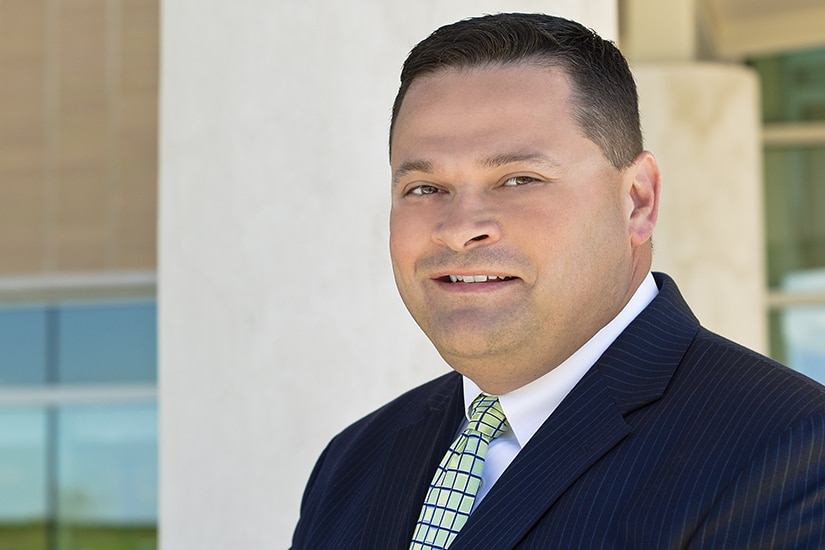|
Getting your Trinity Audio player ready... |
Jim Mormann has spent thirty years in or around the healthcare sphere, and he says that for what he’s trying to accomplish, his tenure may be part of the problem.
At OSF HealthCare—an organization owned and operated by the Sisters of the Third Order of St. Francis and headquartered in Peoria, Illinois—Mormann, the CEO of integrated solutions and CIO, has helped initiate a reexamination of what “integrated solutions” actually means at OSF and for its other clients, starting with leadership. Since initiating this approach, Mormann has compelled those in leadership positions, particularly those with decades of experience like himself, to attempt to recalibrate their approach when it comes to unifying services and addressing what the company calls “tomorrow’s solutions.”
“There’s a reason not a lot of people go down this avenue: it’s hard to do,” Mormann says. “But we won’t be able to handle tomorrow’s supply costs and capital expenditures unless we completely rethink our business model.” The organization is in the early stages of a true integrated services evolution, but OSF is already reaping the early rewards of working for tomorrow today.

Though Mormann came to OSF in 2010, it’s in the past two years that he’s been able to put his title of CEO of integrated solutions to work. “The best way to describe what we’re trying to do is that we’re taking some of the largest areas of healthcare operations and bringing them together differently than what many people have done in the past,” Mormann says. “We are consolidating IT services, construction, facilities management, supply chain, and clinical engineering under one umbrella and are really focusing on truly integrating these areas in a new way.”
Employing new thinking about how to integrate these different departments can be especially challenging for those who seemingly hold all of the knowledge about how their departments operate, Mormann says. “We have people who have been here for thirty years and understand the most efficient way to run their departments,” the CEO says. “What we’re most challenged with is trying to get them to think about a new paradigm.”
And Mormann says he understands why.
“If someone from the outside came to me and told me that they appreciated what I was doing but I needed to run IT differently, I think I would look at them a little bit funny,” he explains. “But this is a key component of transition leadership: how do we disrupt this environment and think differently about innovating new business practices?”
“What we’re most challenged with is trying to get them to think about a new paradigm.”
Silos, and their frequency, are key pain points that Mormann is working to address. He believes that breaking from the mentality of disjointed work is the first step in completely rethinking the business model. “We’re really talking about customer service here, and if we’re delivering disjointed service, it doesn’t really matter whether or not I think I’m doing a good job,” Mormann says. “Truly integrating services means taking responsibility and not passing it off to the next silo. If we’re going to get any more operational efficiency, we have to redefine the model.”
The transition revolution is early on at OSF, but it’s happening. With eleven major transformational initiatives under way, most are prepared for execution with a couple already instated. Each departmental leader at OSF is entrusted with two initiatives requiring interdepartmental cooperation and collaboration. “They have to get comfortable enough with their peers in areas that they may know nothing about,” Mormann says. “We’re completely changing the paradigm on them, and that requires a great deal of trust, accountability, and transparency on their part.”
OSF isn’t taking infrastructure building lightly. As Mormann explains, “Transformation of this type takes time. Establishing business infrastructure foundations like we’re doing needs to be at least two years ahead of the business market, that way if the business moves on you, you don’t have to wait for that infrastructure to change.” Alternatively, and speaking from experience, Mormann believes that companies who are required to change and don’t have the proper infrastructure to handle that kind of shift will be outplayed by more flexible competitors and, ultimately, fail.
Daniel Adamany, the CEO of AHEAD, has worked with Mormann for years to help accomplish OSF’s digital transformation, and as such has witnessed his commitment to working with and for his people and patients. Adamany says, “Having worked closely with Jim for the last decade, one of his characteristics has consistently stood out—a commitment to purpose. Whether his team is modernizing legacy systems and improving data security, or charting the broader digital transformation of OSF, they always keep patient value front and center. Not all leaders are able to maintain that mission mindedness.”
The breadth of perspectives Mormann has been responsible for maintaining throughout his career offers him valuable insight into learning how to better serve both internal and external customers. “We all use the phrase often: we love change when we deploy it somewhere else, we don’t like it when it comes to changing ourselves,” Mormann says. “What we’re doing really requires a whole new level of discipline and changing a lot of belief bias.”
In implementing a transition culture, Mormann is certain that it’s the ideal way for OSF HealthCare to be prepared for anything, to truly be prepared for tomorrow.

